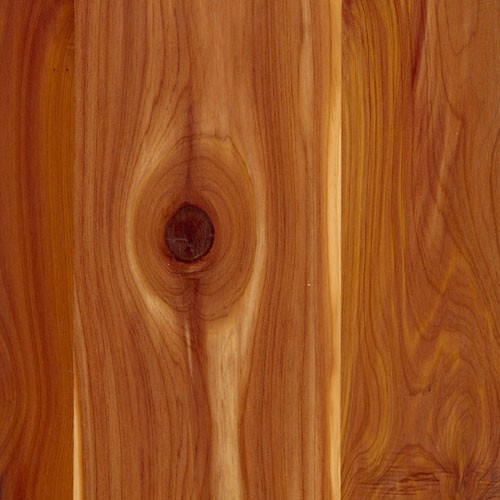Aromatic Cedar
[Juniperus virginiana]
From ancient Egypt to clothing chests, Baton Rouge, Louisiana, to classic pencils, Cedar has one of the most intriguing histories of any tree species. Also known as “Eastern Red Cedar,” “Virginia Juniper,” and “Pencil Cedar,” the wood itself is usually referred to as “Aromatic Red Cedar.”
By any name, this species of Cedar grows natively throughout a wide footprint in the eastern half of North America — from Southeastern Canada down to Florida, and as far west as South Dakota and Texas.
A member of the Juniper family of conifers – one of the oldest on earth – it was said that the Ancient Egyptians used Cedar to make chariot wheels in 1300 B.C. Around the same time in North America, indigenous people historically used Cedar poles to demarcate their agreed tribal hunting territories. And many Native American cultures believed the smoke of burning Cedar wood expelled evil spirits, so they used it when conducting ceremonies, including healing rituals.
In the 17th century, the Dutch first distilled gin from the Juniper berries of the tree, a practice that continues today. Then in 1755, French Acadians, who were deported from Nova Scotia by the British to present day Louisiana, found a familiar softwood tree growing naturally in their new homeland. Referring to its red bark and red wood, they called it “Baton Rouge,” which in French means “red stick,” a name that settlers later adopted for the eventual state’s capital city.
Matching its long and interesting history, Cedar is also an unusually long-lived pioneer species. In fact, Cedar trees can live over 900 years — the oldest reported tree being a 940-year-old specimen in West Virginia. At the same time, they grow very slowly over their long lifetimes. So slow that most harvested Cedar trees tend to be fairly small in diameter, which makes most Aromatic Red Cedar boards knotty and narrow.
Cedar trees also have several uniquely enviable qualities. First, the wood is rather light weight, only 33 lbs. per cubic foot. And yet, surprisingly strong — nearly 80% as strong as White Oak. But perhaps Cedar wood’s most renowned quality is its sweet fragrance. While most people love the aroma, moths and Buffalo Beetles find it highly repugnant and totally avoid it — and anything inside a container made of it. Like Cedar chests and Cedar closets, both of which have been prized for protecting woolens and other clothing items since Colonial times.
Another super interesting Cedar fact: the best portions of the heartwood were historically one of the best and most suitable woods for making pencils. And in America’s early history, almost all pencils were made of Cedar. But by the 1940s, the supply of Eastern Red Cedar was so diminished that pencil factories had to switch to a related species, Incense Cedar, to maintain production.
As fascinating as Cedar is, it’s also a classically-rustic, beautiful wood. Almost always knotty, it features a reddish or violet brown heartwood and pale yellow sapwood with a pale pink hue that often appears throughout the heartwood as streaks and stripes. The grain of Cedar is straight, with a very fine, even texture. And don’t forget that familiar, pleasant aroma.
Combine its lightweight yet durable qualities and charmingly nostalgic appearance, and it’s easy to see why Cedar is a favorite choice for wood veneer sheets, custom plywood, Cedar chests and clothing storage, outdoor furniture, and fence posts.
Species Distribution:
Eastern North America
Southeastern Canada
Maine
Ontario
South Dakota
Florida
Texas
Common / Alternative Names:
Aromatic Red Cedar
Eastern Red Cedar
Eastern Redcedar
Virginian Juniper
Eastern Juniper
Red Juniper
Pencil Cedar
Janka Hardness:
900 lbf
Sustainability Status:
CITES Appendices: Not listed
IUCN Red List of Threatened Species: Listed as a species of least concern.
Related Species:
African Juniper (Juniperus procera)
Alligator Juniper (Juniperus deppeana)
Southern Redcedar (Juniperus silicicola)








